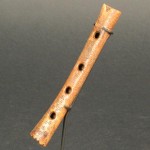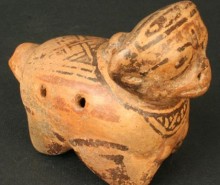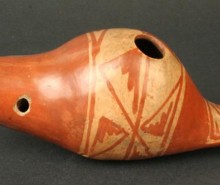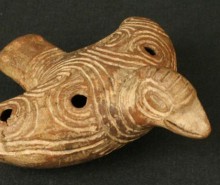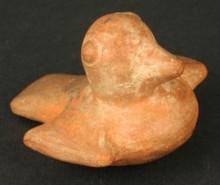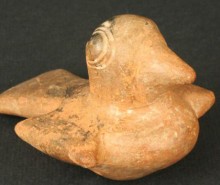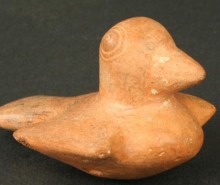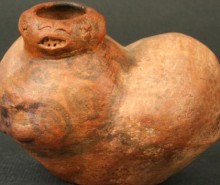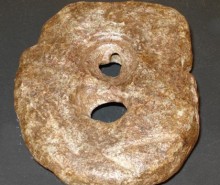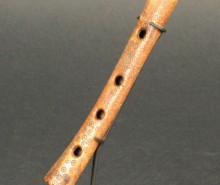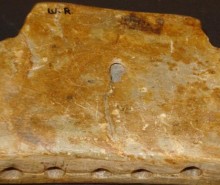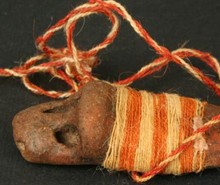Bone Quena
This bone flute was made by the Nasca culture, which inhabited the southern coast of modern-day Peru between the years 100 and 700 CE.
It is a type of wind instrument known as a quena, still commonly used in the Andes. The player blows over the top with his lips, making a vibrating air column, and uses the finger holes to vary the pitch of the sound produced. According to ethnographic studies, the upper holes are fingered with the index and ring fingers of the left hand, and the lower holes with the same fingers of the right hand.
The piece is decorated with small circles engraved in the bone.
It was not possible to measure its pitches.
Dimensions: 92 mm long x 14 mm wide x 1 mm thick (approx 4” x ½” x 1/20”).
Ver ficha de documentación organológica
Part Code: MCHAP 757




































